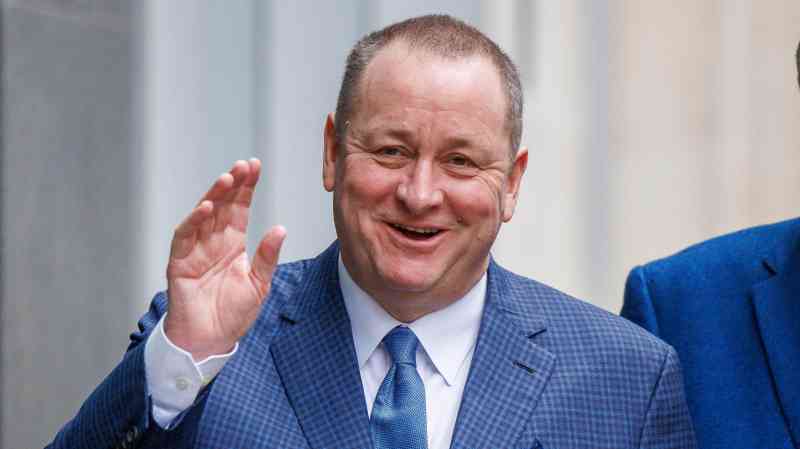Don’t forget about ‘export or die’. Trade still matters
When I mentioned last week that the trade figures had become something of a Cinderella statistic, barely mentioned these days, I was not quite prepared for the response. Many people got in touch to tell me they were puzzled by how data that once dominated the debate — and often led the evening news — had become, at best, an also-ran.
Even before that reaction, I promised to rectify this by writing about what has been happening to trade. I try to keep promises, so here goes.
Let me start by dealing with the puzzle. There was a time when the trade figures were indeed central to the economic debate and economic policy. To understand why, we have to go back to the post-war exchange rate framework, the so-called Bretton Woods system — named after the New Hampshire resort where, at a conference in 1944, the International Monetary Fund and the World Bank were established.
Unlike now, when currencies “float” and can move around relatively freely, they were fixed (but adjustable) back then. They could move by only a small amount around a central rate before they had to be supported by direct official intervention in foreign exchange markets, or by pushing up interest rates. There was thus a direct route from a weak pound to the domestic economy. If sterling came under pressure, and interest rates had to be hiked to defend it, it was bad news for borrowers.
Sterling had a central rate of just above $4 to the pound immediately after Bretton Woods, but a formal devaluation took it down to $2.80 in 1949. Trade figures were the bane of Harold Wilson’s 1964-70 Labour premiership, forcing a second devaluation of sterling in November 1967 to $2.40 — the “pound in your pocket” devaluation.
A bad set of trade figures during the campaign was also blamed for Wilson’s surprise defeat in the June 1970 general election. Either that or England being knocked out of the World Cup by West Germany four days before. Wilson lost to Edward Heath, who took the UK into the European Economic Community at the start of 1973. It might not have happened under Labour, which then was far more divided than the Tories on Europe, forcing Wilson to hold a referendum on staying in after he was re-elected in 1974. That referendum, in 1975, was comfortably won by the remain camp.
The early 1970s represented the last time that trade figures were so influential. After that, two things happened. First, the Bretton Woods system broke down, since when sterling has been a floating currency, apart from the brief period of European exchange rate mechanism (ERM) membership in the early 1990s.
The other change was that capital flows came to dominate trade flows. Interest rate differentials and sentiment became more important determinants of exchange rates than the trade figures. A recent example of sentiment turning sour was when the pound fell to record lows against the dollar after the Liz Truss/Kwasi Kwarteng mini-budget almost two years ago.
If that is why the trade figures are no longer prominent, they nevertheless matter. “Export or die” used to be a popular slogan and there is still a lot of truth in it. Exporting businesses tend to be the productivity drivers, and productivity leaders, in the economy.
The nature of UK trade has changed significantly. At one time, Britain was the workshop of the world and, indeed, did not record a first trade deficit in manufacturing until the early 1980s. Now that deficit — £112 billion last year, within an overall deficit in goods trade of almost £187 billion — is large and, it seems, unbridgeable.
For many years, a deficit on trade in goods has been mainly offset by a surplus on services. The last time that goods trade was in surplus was well over a quarter of a century ago, when North Sea oil exports were still important.
The goods-to-services shift has happened in another way, in fact within the past three years. In 2021, exports of services exceeded goods exports for the first time, and this has persisted. Last year, service sector exports in cash terms were nearly a fifth higher than exports of goods.
You may ask what these services are. Business and professional services — including accountancy, consultancy, advertising and the law — dominate, with about 38 per cent of service-sector exports. They are followed by financial services on about 18 per cent; travel, transport, insurance and education make up most of the rest. Business, professional and financial services, dominated by London and the southeast, keep the UK afloat globally.
Despite the success of service sector exports, they have not been enough to compensate for the large deficit on goods. The UK has been running an overall trade deficit, taking goods and services together, for at least ten years, apart from during the pandemic, when there was short-lived surplus because of trade distortions. Adjusted for inflation, the deficits for the past couple of years have been the biggest on record. In 2022, part of that was due to costly energy imports. The deficit for the latest 12 months was just over £40 billion.
Where that settles remains to be seen. Brexit has had a negative effect on both exports and imports. The Office for Budget Responsibility (OBR) believes that the UK is on track for a 15 per cent drop in trade intensity — exports plus imports as a share of gross domestic product — since leaving the EU. Trade intensity was 65 per cent in 2019 and, for that matter, in 2022, but it dropped below 64 per cent last year and was 63 per cent in the first half of this year.
It is holding up better than feared so far, though, and this owes most to the resilience of imports, which in the first half of this year were nearly 3.5 per cent higher in volume terms than in the second half of 2019.
Exports adjusted for inflation, in contrast, were lower in the first half of this year than in the second half of 2019, immediately before the pandemic and the UK’s exit from the EU. This compared with volume growth of nearly 20 per cent over the previous five years. Exports have become a drag on growth. Not all of this can be attributed to Brexit — there was supply-side disruption as a result of the pandemic — but the UK’s performance stands out as very weak compared with other advanced economies.
This weakness is particularly concentrated in goods exports, which last year were 11 per cent down on 2019 levels in inflation-adjusted terms and have weakened further this year, Interestingly, the proportion of exports going to the EU, 48 per cent, was the same last year as in 2019, so the drop in goods exports is across the board. One theory is that the greater difficulty of selling into the EU, because of trade frictions, has affected exports globally. Another is that many small firms, in particular, have withdrawn from exporting altogether. A closer trading relationship with the EU might help, and the government is said to be seeking it, if it is not too late.
Either way, it is not good. The trade figures may no longer make the headlines, but they still matter.
PS
There had been some concern that the Bank of England’s monetary policy committee (MPC) would be short of members for its next meeting, because of a delay in the announcement of a replacement for Jonathan Haskel, who had completed two three-year terms, the maximum allowed.
A replacement was announced a few days ago, however: Professor Alan Taylor. Born in Wakefield and a mathematics graduate of King’s College, Cambridge, he did a PhD in economics at Harvard and has since spent his career in US academe.
The only time I have come across Professor Taylor was just over ten years ago. This was when he was based at the University of California, Davis and co-authored a paper, with Oscar Jorda of the Federal Reserve Bank of San Francisco, called The Time for Austerity: Estimating the Average Treatment Effect of Fiscal Policy.
As its name suggests, this was a learned and complex piece of work. But, using Britain as an example of austerity in practice, it was marred by misunderstandings, proving that you cannot usefully analyse the UK economy from the West Coast of America. There was much to criticise about the austerity of the 2010s, but I had another look at the paper the other day and it looks worse with the passage of time. Some of the adverse performance of the UK economy relative to that of America in the early 2010s, highlighted in the report and including a “double-dip” recession, was subsequently revised away by the statisticians.
Taylor will be closer to the UK action in his new role at the Bank. I wish him luck in his new challenge.






